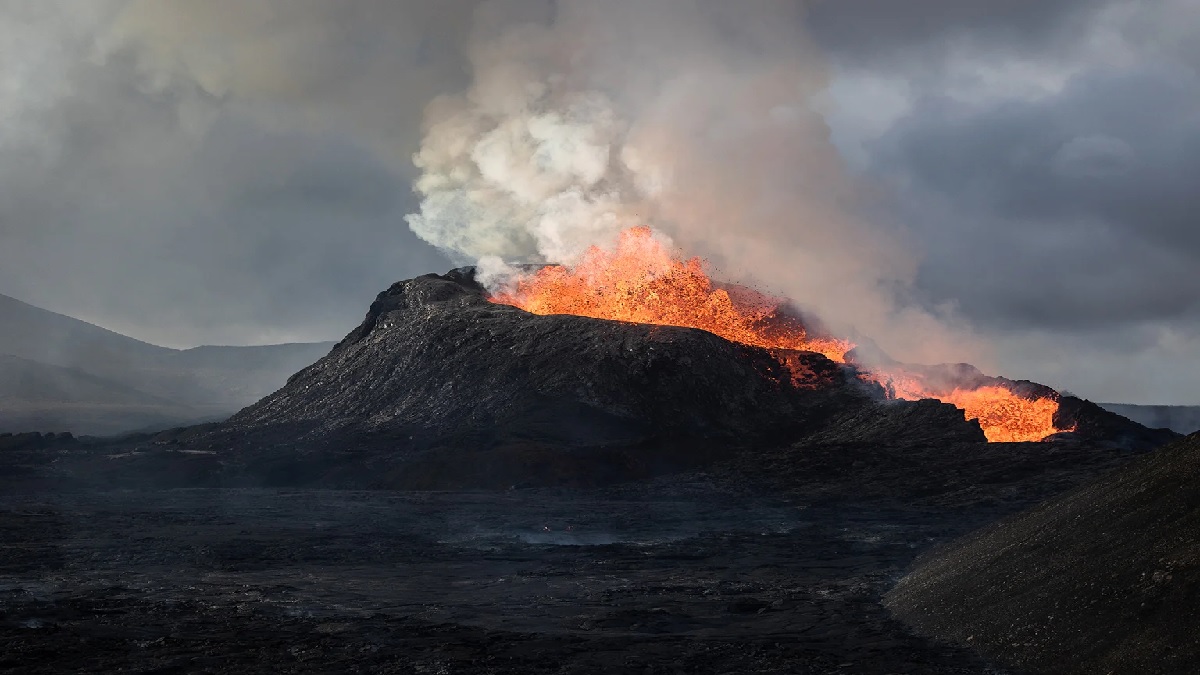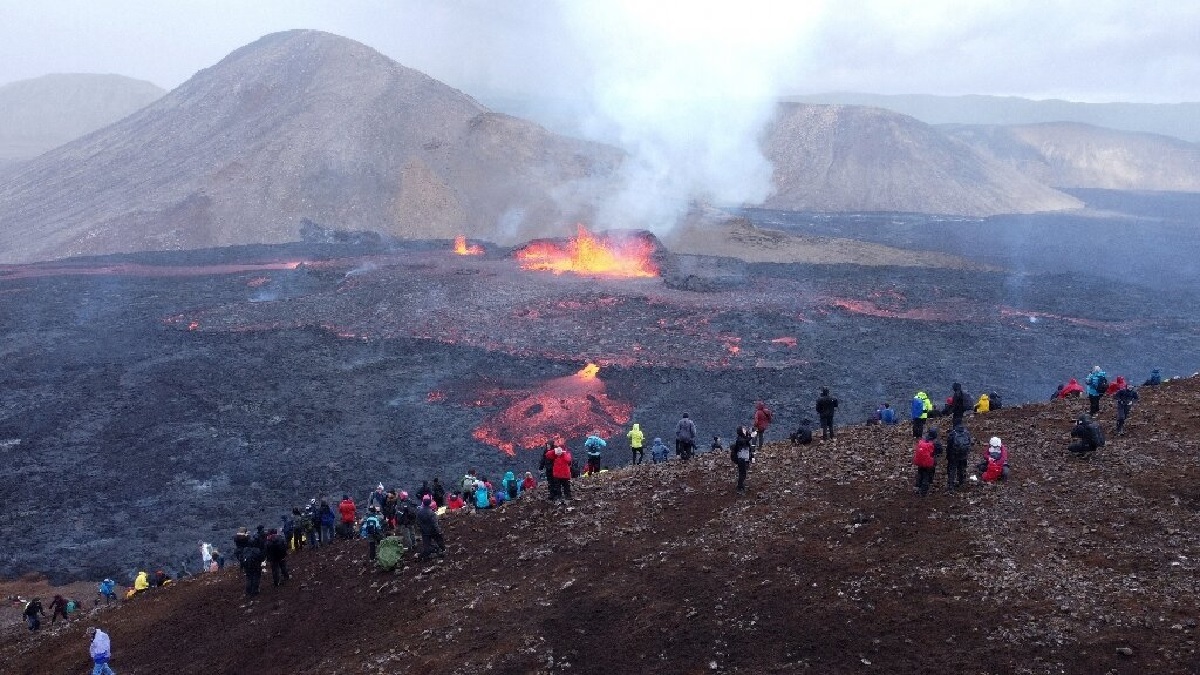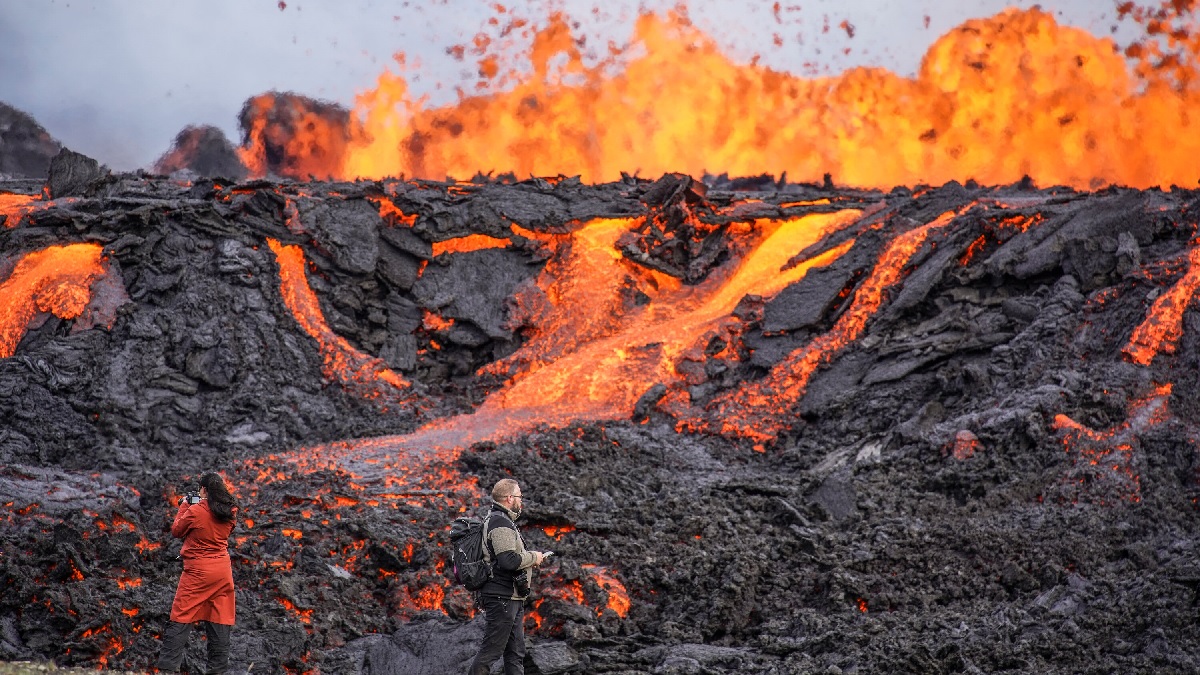Icelandic Volcano Eruption: Iceand Recorded 2200 Earthquake In 24 Hours
Recently, 7,000 earthquakes have been registered in Iceland during the past several days, reflecting an increase in seismic activity. This has sparked worries about the nation’s ability to have a big volcanic eruption. In particular, aviation operations may be significantly impacted by such an occurrence. The growing body of data shows that magma is approaching the surface as the Icelandic Met Office regularly watches the activity. This article examines the dangers and probable effects on the aviation sector of an Icelandic volcanic eruption.

Icelandic Volcano Eruption
The Icelandic Met Office has been monitoring the earthquake activity in Iceland since 4th July 2023. There were about 480 earthquakes on 6th July 2023, which is a major surge in geological instability. Although the earthquakes so far have only been mild, they are a clear sign that magma is slowly but surely moving toward the surface. This development makes one worry about a possible volcanic explosion, which might have far-reaching effects.

Iceland’s advantageous location halfway between North America and Europe makes it a key airspace route for flights over the Atlantic. There is a huge risk to aviation if a volcano erupts and releases volcanic ash into the sky. Particles of volcanic ash can harm aircraft engines, reduce vision, and interfere with vital flying systems. Because even a modest eruption might result in widespread flight cancellations and airspace closures, airlines and aviation authorities are constantly watching the situation. Scroll down to the next paragraph to know more.

The 2010 Eyjafjallajökull volcanic eruption in Iceland is still fresh in the minds of many working in the aviation sector. A large portion of the world’s airspace was shut down due to the volcanic ash cloud, which also caused the cancellation of almost 100,000 flights and had an impact on millions of passengers. This incident acted as a wake-up call, emphasizing how critical it is to manage volcanic dangers to aviation in a proactive manner. Aviation authorities have developed effective mitigation methods in response to the potential hazard posed by volcanic eruptions.
To improve the monitoring and detection of volcanic ash, meteorological agencies, volcanic ash alert centers, and airlines are working together. A greater understanding of volcanic ash dispersal is made possible by sophisticated ash detection equipment and improved modeling approaches, helping to lessen the effect on air traffic. To make informed judgments about aircraft operations during volcanic occurrences, aviation regulators keep in regular contact with airlines and meteorological organizations. Stay updated with PKB News.






